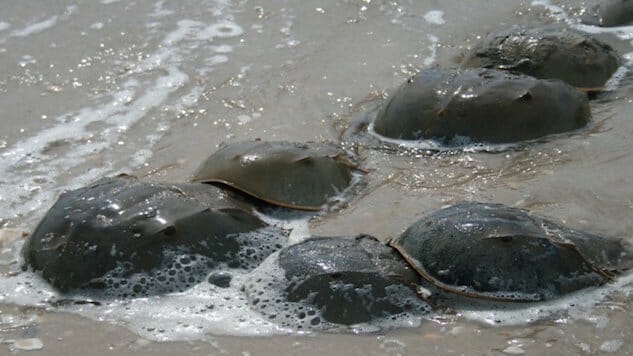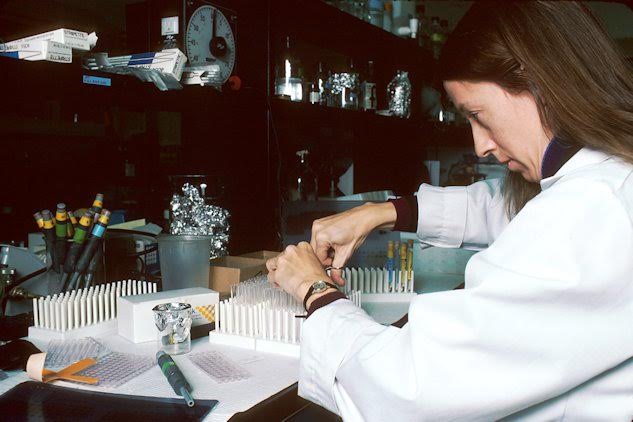Horseshoe Crabs: Ancient Creatures Helping to Keep Us Safe

Horseshoe crabs have roamed the Earth’s sea floors for 450 million years, even before the dinosaurs ruled the land. But these clunky living fossils, more closely related to spiders and scorpions than their namesake crabs, play an important role in today’s modern world, thanks to an unusual element they carry in their veins.
Though the adults sometimes roam into the ocean’s deep depths, these creatures spend much of their life in coastal waters, where gram-negative bacteria—including the familiar and dangerous E. coli—thrive. Horseshoe crabs have a more porous circulatory system than humans do, with many potential openings for disease-causing bugs to attack. When such a breach occurs and bacteria infect the body, a special type of blood cells called amebocytes spring into action.
Named after the single-celled amoeba due to their motility, the amebocytes are sensitive to endotoxin, a component of a gram-negative bacterium’s cell wall. When endotoxins are detected, the amebocytes release granules of a clotting agent called coagulogen, which surround the bacteria to both stop the infection and form a barrier to prevent additional bacteria from entering the body. This reaction occurs quickly, usually within 45 minutes, compared to the days it can take our white blood cells to fight off invaders.
The creature’s unusual defense system was first witnessed in 1956 by Dr. Frederik Bang, a researcher and professor at Johns Hopkins University, while he was studying the circulatory system of a horseshoe crab. His unfortunate study subject acquired a bacterial infection, which clotted the bulk of its blood supply into a jellied mass. His discovery and further research led to the development in the 1970s of the Limulus amebocyte lysate (LAL) test, which is used to detect the presence of gram-negative bacteria in such diverse settings as hospitals, labs, vaccinations and water supplies. The LAL test offers a faster detection time and lower cost than the previous method, which used rabbits as the bellwether of the presence of endotoxins.
Producing the lysate, a preparation that contains the products from ruptured cells, begins with the source of the amebocytes: horseshoe crab blood. Though horseshoe crabs live throughout the world, the specific species that carries the amebocytes used for the LAL test, Limulus polyphemus, lives in the Atlantic Ocean along the North American coastline. If the creatures themselves could not look any more alien, with their U-shaped body armor and whip-like tail, their blood takes it to another level. The oxygen-carrying protein hemocyanin renders the animals’ blood a milky blue color, a telltale sign of the copper molecule it carries. Lucky for these creatures, the blood extraction process is usually harmless, and the animals can return to the sea within 24 hours.
